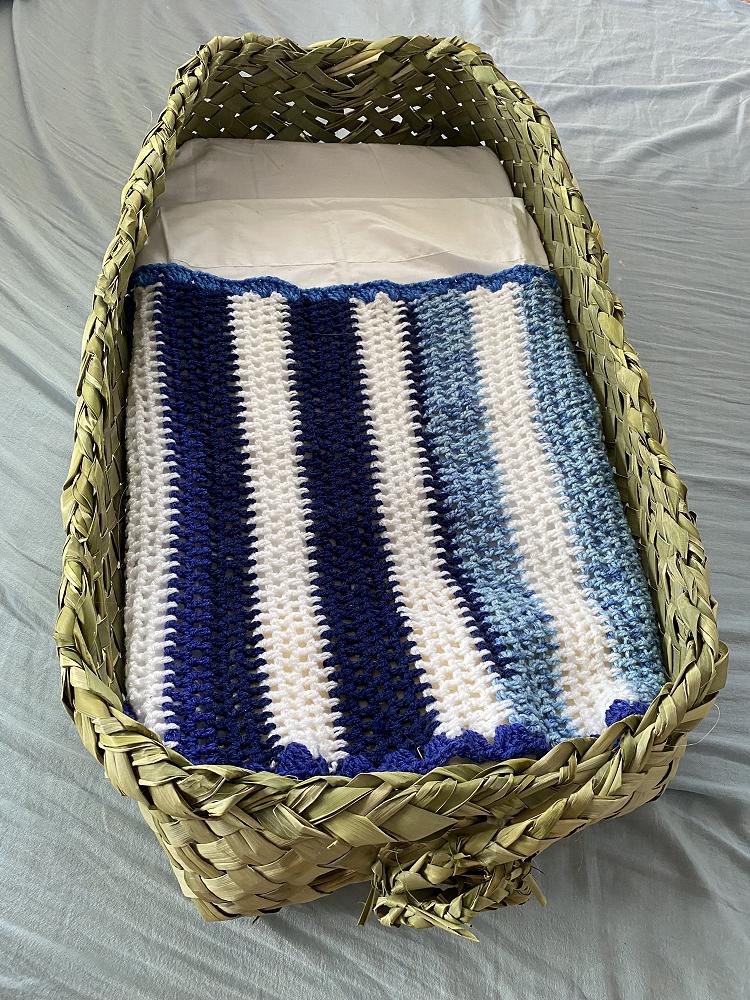
He Whakaaroaro; Weaving Toanga
Betty Brown, one of our Kaikarakia in training from the Waikato Rohe, is a kairaranga (weaver) who uses her expertise and knowledge in raranga (weaving) harakeke (flax) to teach others.
Betty facilitates wānanga (live-in learning situations) for the making of wahakura (baby safe sleeping devices), and brings together people of different ethnicities, and religions. This is a powerful life-giving example of ministry that engages, equips and empowers whānau for living today. God invites us to see the joy and passion present in the appreciation of our taiao (environment).
Karakia Tīmatanga: Betty Brown
For more than 10 years we have worked with whānau running wānanga to create wahakura. Some mothers want baby to sleep with them in bed. In the wahakura baby can be close to Mum, but also safe in their own space. The wahakura becomes a place of safety for the newborn and is an intervention by Māori to support the prevention of babies dying from Sudden Unexplained Deaths in Infancy (SUDI). The word ‘waha’ means to carry and when used in this context ‘kura’ means precious. I also prefer to call these taonga (gifts) pēpi moenga.
When the local District Health Board contacted me to run wānanga for teaching whānau how to make their own wahakura I agreed because I felt there was a need to provide safe sleeping devices for newborn babies. I have taught people how to weave many taonga from kono (small food baskets) to korowai (cloaks) and everything in between. But I concentrated on wahakura because there was a purpose for it, and this is a need not a want. Its purpose is to provide safety for babies, for our mokopuna (grandchildren) which is motivation for the work I do. As a mother of six children, grandmother of 27 and great grandmother to 17, this is one way I can help other whānau to provide safety for their babies.
We ran wānanga wahakura teaching young mums, grandmothers, Indian, Chinese, European - anyone interested how to weave their own wahakura. The wānanga are open to the whānau to attend but for optimum results it is best to work with no more than 10 people at any one time. We ran these wānanga over a weekend period and the attendees include students learning tikanga (traditions and customs) around weaving and harvesting flax as well as the preservation of the wahakura.
For me it is special to teach a couple how to weave a wahakura; parents working together and learning how to care for their babies using the wahakura emphasising that it is not a carrying device. We put our love into these pēpi moenga. There is a mauri (life essence) with each one created of your own hands. At the end of the wānanga the whānau are able to take the wahakura home with them. Many of the mums who attend the wānanga do not have any experience working with flax and are so appreciative when returning home with their new wahakura. They have gained knowledge and learned a new skill. They also have something to show for their efforts. A lot of the mums hand the wahakura down in their whānau. It becomes a whānau taonga.
The preparation is the longest part of the process. For someone with no experience with flax and depending on their energy levels and aptitude for learning these new skills it might take a whole day to weave up a wahakura. Karakia is also part of the process we teach at the wānanga. Karakia Tīmatanga opening prayer is used every day to start the day’s work. Our prayers ask God for help to make our wahakura. I encourage those present in the wānanga to offer their own prayers. This is a prayer I often use.
E te Atua,
Ānei mātou e inoi atu nei ki a koe,
Hōmai tō ihi, tō kaha, tō wehi,
Mō tēnei taonga tuku iho,
Mai i ngā tupuna,
I roto i tēnei whānau
I mua i tā mātou wānanga wahakura.
Hei oranga mō ngā uri whakatupu
Amine.
